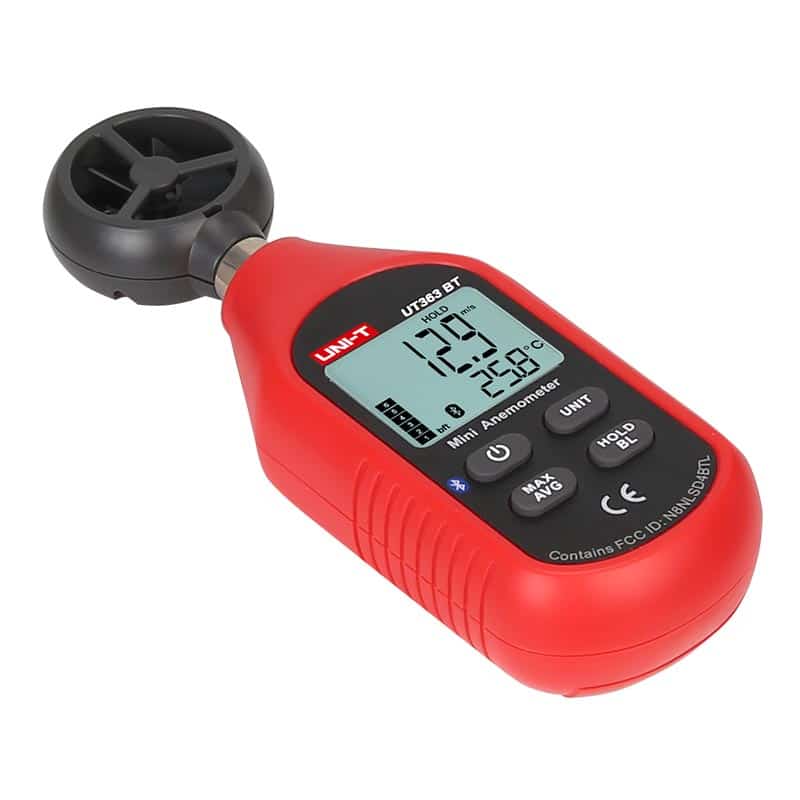All You Need to Find Out About Anemometers: How They Function, Why They Issue, and Where to Make use of Them
Anemometers, though frequently overlooked in the realm of scientific instruments, play a critical duty in different areas, supplying valuable insights into wind speed and airflow patterns. Recognizing the mechanics behind these gadgets is essential for anyone seeking to harness the power of this information. From meteorologists tracking climate patterns to engineers making frameworks with wind tons in mind, the applications of anemometers are far-reaching and diverse. As we explore the complexities of anemometer technology, we will certainly reveal the internal operations of these tools, their importance, and the essential factors to consider when picking the appropriate anemometer for particular applications.

Anemometer Fundamentals
A necessary tool made use of to measure wind speed and instructions, the anemometer plays a critical role in weather forecasting and various industries. An anemometer usually contains 3 or 4 cups that rotate in the wind, a vane that directs into the wind, and sensing units to track the activities or turnings. By computing the turnings or motions over a details time period, the anemometer can establish wind rate. The vane aids identify wind instructions by directing right into the wind, providing beneficial information for weather condition forecasting, aeronautics, maritime procedures, environmental tracking, and wind energy applications.
There are various kinds of anemometers offered, including cup anemometers, vane anemometers, hot-wire anemometers, and sonic anemometers, each with its unique functions and applications. Mug anemometers are frequently utilized for fundamental wind speed measurements, while vane anemometers are favored for directional measurements. Hot-wire anemometers appropriate for low airspeeds, and sonic anemometers are ideal for high-precision dimensions in research and industrial setups. Recognizing the essentials of anemometers is necessary for exact wind data collection and analysis across different industries.
Concepts of Anemometer Operation
Building on the foundational understanding of anemometer fundamentals, the principles of anemometer operation clarify the auto mechanics behind wind speed and direction measurements. Cup anemometers, for instance, have three or even more cups that record the wind, creating them to rotate faster as the wind speed boosts. Hot-wire anemometers depend on a warmed wire that cools down as wind passes over it, with the rate of cooling down identifying the wind speed.
Importance of Anemometers
The relevance of anemometers in meteorology and numerous sectors can not be overstated. Anemometers play a vital role in measuring wind speed and instructions, giving vital information for weather forecasting, climate researches, ecological monitoring, and air travel procedures. Meteorologists depend on anemometers to collect accurate wind data, aiding them comprehend weather patterns, predict storms, and concern prompt warnings to the public. In markets such as construction, agriculture, eco-friendly energy, and maritime operations, anemometers are utilized to maximize procedures, ensure safety, and increase performance. As an example, wind ranch operators utilize anemometers to examine wind problems and maximize electrical energy production from wind generators. In the maritime market, anemometers aid ship navigation by giving real-time wind information to captains, assisting them make educated choices to make sure secure voyages. On the whole, anemometers are essential tools that contribute considerably to safety, effectiveness, and notified decision-making in meteorology and a wide variety of industries.
Applications Throughout Different Industries
Applications of anemometers span throughout varied industries, showcasing their versatility and utility past meteorology. In the eco-friendly energy field, anemometers play a critical function in assessing wind conditions for wind ranch positionings, making sure optimum energy manufacturing. Industries like building and mining use anemometers to monitor wind rates, crucial for safety and security procedures, especially when operating at heights or in open-pit mines where solid winds can pose hazards. Anemometers are additionally Extra resources indispensable in the aeronautics market, assisting pilots in recognizing airspeed and wind instructions for risk-free liftoffs and touchdowns. The maritime field advantages from anemometers for ship navigation, assisting seafarers prepare for weather modifications and adjust routes as necessary. In farming, anemometers assist farmers in managing crop splashing by offering real-time information on wind rate to prevent drift. Anemometers locate applications in Cooling and heating systems to enhance airflow and enhance energy efficiency in buildings. The diverse use cases of anemometers underscore their significance throughout numerous markets, highlighting their crucial duty in enhancing operational security and effectiveness (anemometer).

Choosing the Right Anemometer for Your Demands
For general purposes, a mug anemometer is ideal for determining wind speed, while a vane anemometer offers wind instructions data. Hot-wire anemometers are suitable for reduced airspeed measurements, and ultrasonic anemometers use high precision and resilience.

Verdict
In final thought, anemometers play a crucial duty in measuring wind speed and direction across different industries. It is essential to think about the significance of anemometers in order to make informed decisions when selecting the most appropriate tool for determining wind conditions.
There are various types of anemometers offered, including cup anemometers, vane anemometers, hot-wire anemometers, and sonic anemometers, each with its one-of-a-kind functions and applications. Mug anemometers are generally made use YOURURL.com of for standard wind speed measurements, while vane anemometers are favored for directional measurements. Hot-wire anemometers are appropriate for low airspeeds, and sonic anemometers are optimal for high-precision measurements in research Click This Link and industrial settings.Building on the foundational understanding of anemometer essentials, the principles of anemometer operation clarify the technicians behind wind speed and instructions dimensions. For general purposes, a mug anemometer is appropriate for determining wind rate, while a vane anemometer gives wind direction information.